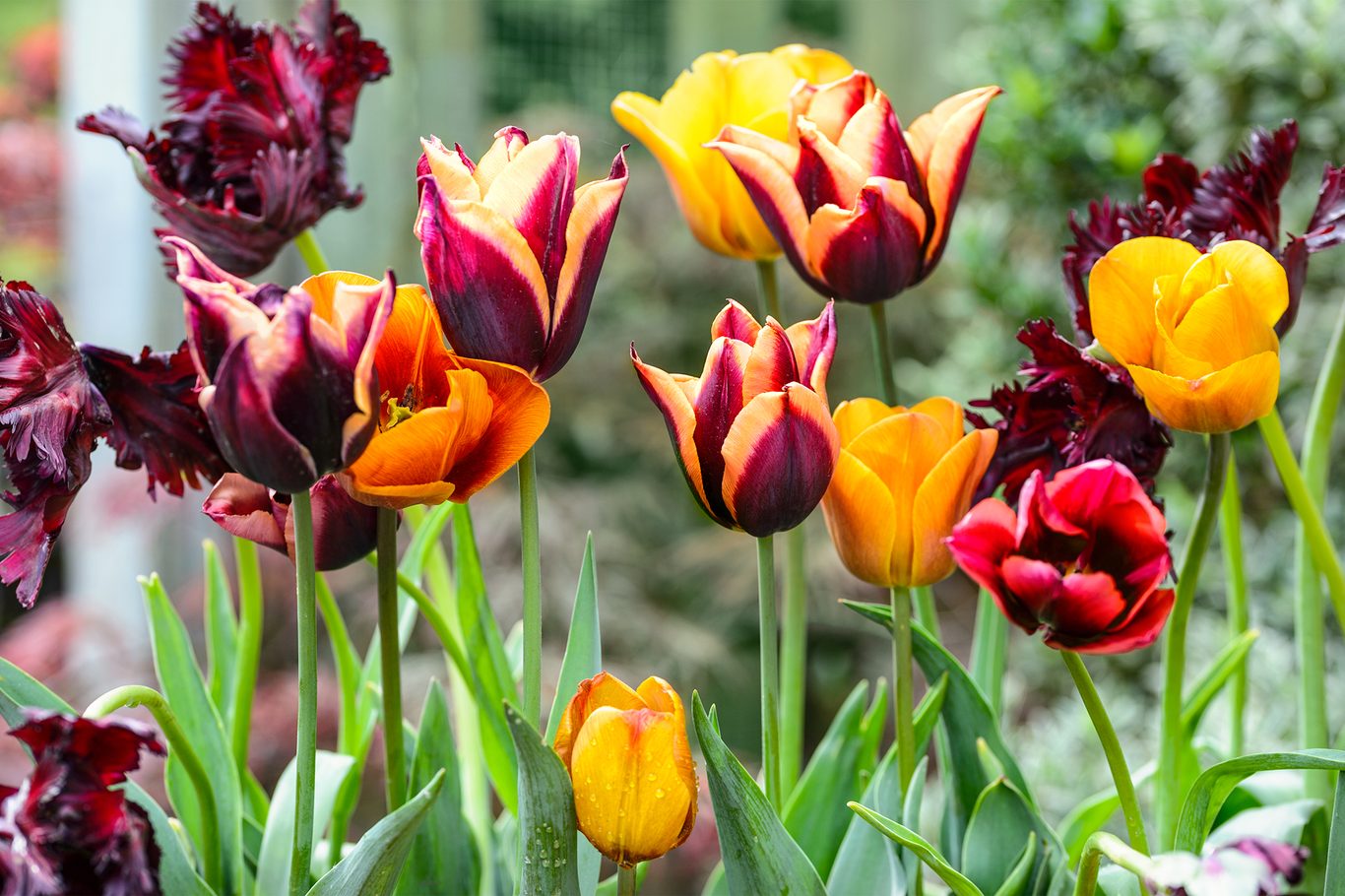Few flowers symbolize spring as beautifully as tulips. Their vibrant colors, graceful forms, and timeless appeal make them one of the most beloved bulbs for gardeners across the United States, United Kingdom, and Canada. But while planting tulips is fairly straightforward, adding a little creativity can transform your garden into a striking display that captures attention long after the blooms have faded. In this article, we’ll explore Creative How To Plant Tulips techniques, combining practical advice with artistic approaches to ensure your tulip garden not only thrives but also stands out.Understanding Tulips Before You PlantTulips belong to the lily family and are native to Central Asia, thriving in climates with cold winters and dry summers. To get the best results, it’s important to know their basic requirements:Hardiness: Most tulips grow well in USDA zones 3–8, and in cooler regions of the UK and Canada.Soil: Well-draining soil is key. Tulip bulbs dislike soggy ground, which can cause them to rot.Light: Full sun exposure ensures strong stems and vibrant colors.Knowing these essentials sets the stage for more creative tulip planting ideas.Choosing Tulip Varieties for Creative DisplaysNot all tulips are created equal. For a garden with artistic flair, mix and match different types:Single Early Tulips: Compact and reliable, great for borders.Parrot Tulips: Ruffled petals in dramatic shades—ideal for focal points.Darwin Hybrids: Tall and bold, perfect for mass plantings.Triumph Tulips: Available in countless colors, offering design flexibility.By combining heights, bloom times, and colors, you can achieve a layered, dynamic effect rather than a simple row of flowers.Preparing the Ground with Creativity in MindBefore you dig, think about your design. Traditional straight lines are fine, but creative tulip planting calls for imaginative patterns. Here’s how to prepare:Soil Preparation: Loosen the soil to a depth of at least 12 inches. Mix in compost or sand to improve drainage.Layout Planning: Instead of planting in rigid rows, sketch out curves, waves, or clusters. Natural-looking drifts mimic how flowers grow in the wild.Color Theory: Plan your planting based on color combinations—contrasting colors like purple and yellow create drama, while soft pastels like pink and cream evoke romance.Creative Planting TechniquesH2: Layered “Lasagna” PlantingOne of the most innovative methods in the Creative How To Plant Tulips approach is layered planting. Much like layering pasta in a lasagna, bulbs are stacked at different depths in the same hole or container.Bottom Layer: Larger, late-blooming tulips.Middle Layer: Mid-season varieties.Top Layer: Early bloomers.This method extends your bloom season and gives the impression of continuous flowering from early to late spring.H2: Planting Tulips in Patterns and ShapesFor gardeners who love bold designs, planting tulips in recognizable shapes adds a whimsical touch.Circles and Spirals: Create a swirling effect that draws the eye.Hearts and Stars: Perfect for front yards or community spaces.Checkerboard Beds: Alternate colors for a striking modern look.These designs require planning—mark your pattern with flour or string before planting bulbs.H2: Companion Planting with TulipsTulips don’t have to stand alone. Companion planting adds texture, extends interest, and even protects the bulbs.With Daffodils: Deter rodents since daffodils are toxic to pests.With Grape Hyacinths (Muscari): Low-growing blue flowers that complement taller tulips.With Perennials: Tulips die back in summer, so pairing them with hostas or daylilies ensures the space stays lively.This creative tulip planting idea keeps your garden vibrant beyond tulip season.H2: Container Tulip GardensIf you have limited space or poor soil, containers are a fantastic way to showcase tulips.Creative Containers: Use rustic wooden boxes, vintage metal tubs, or even repurposed wheelbarrows for character.Mixed Plantings: Combine tulips with pansies, violas, or creeping ivy for a lush look.Portability: Containers can be moved to highlight focal areas in your garden or patio.This approach allows city gardeners in the UK, Canada, or the US to enjoy tulips even without a traditional backyard.Practical Tips for SuccessWhen to Plant TulipsTiming: Plant tulip bulbs in the fall, about 6–8 weeks before the ground freezes.Depth: A general rule is to plant bulbs three times as deep as their height (usually 6–8 inches).Spacing: Allow 4–6 inches between bulbs to prevent overcrowding.Protecting Your Tulip BulbsAgainst Squirrels and Rodents: Cover planting areas with chicken wire or use repellents.Against Harsh Winters: Apply mulch after planting to insulate bulbs from freeze-thaw cycles.Maintenance TipsWatering: Water thoroughly after planting but avoid overwatering in winter.Deadheading: Remove faded blooms in spring to encourage energy back into the bulb.Replanting: In warmer regions, tulips often perform better when replanted each year.Adding Seasonal CreativityTulip gardens don’t have to be static. Add seasonal charm with these ideas:Spring Accents: Place decorative garden stakes, fairy lights, or rustic signage among your tulips.Seasonal Themes: Plant red, white, and blue tulips for patriotic displays in the US, or red and white for Canada. In the UK, pastel combinations evoke classic cottage gardens.Wildflower Mixes: Scatter wildflower seeds around tulip beds for a more natural, meadow-like effect.Common Mistakes to AvoidEven with the best intentions, some errors can ruin your tulip display. Watch out for these pitfalls:Planting in soggy soil without proper drainage.Overcrowding bulbs, leading to weak growth.Forgetting to chill bulbs in warmer climates (zones 9 and above).Planting bulbs too shallow, causing them to be uprooted by frost or animals.Avoiding these mistakes ensures your creative tulip planting project flourishes.ConclusionPlanting tulips doesn’t have to be limited to neat rows in the garden. With a little imagination, you can transform your yard, balcony, or community space into a breathtaking spring spectacle. Whether you experiment with layered “lasagna” planting, design whimsical shapes, or mix tulips with companion plants, the possibilities are endless.

